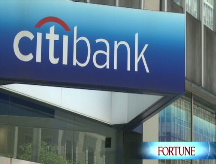Run ends on money market funds
Investors are no longer yanking billions of dollars out of money market funds, thanks to a new federal government insurance program.
| MMA | 0.69% |
| $10K MMA | 0.42% |
| 6 month CD | 0.94% |
| 1 yr CD | 1.49% |
| 5 yr CD | 1.93% |
NEW YORK (CNNMoney.com) -- Investors have stopped fleeing money-market funds, a week after the federal government said it would insure fund shares don't lose their value.
Under the program, which began Monday, the Treasury Department will guarantee that the value of participating money funds will not fall below the standard $1 a share. Fund companies must pay for the insurance and only shares held on or before Sept. 19 will be covered.
The rapid exodus from money funds began after The Reserve Fund announced on Sept. 16 that shares in its primary fund fell to 97 cents due to losses incurred when Lehman Brothers declared bankruptcy.
The total held in money funds, which had hit a record high of $3.535 trillion on Sept. 9, plummeted to $3.288 trillion 10 days later, when the government plan was unveiled.
Since then, investors have slowly returned to the securities, which held a total of $3.348 trillion as of Monday. Until the recent crisis, money funds have been considered as safe as cash. Unlike bank accounts, however, money funds are not FDIC-insured.
However, the money is mainly going to funds that hold Treasurys, said Connie Bugbee, managing editor of iMoneyNet, which follows money funds. Retail and institutional investors pumped up their holdings in such funds to $1.2 trillion Monday, up from $924 billion two weeks ago.
Conversely, funds that invest in riskier commercial paper, or short-term corporate debt, have dropped to $1.6 trillion, down from $2 trillion. Investors are avoiding these so-called prime funds because the commercial paper market has frozen in recent weeks. Few investors are buying commercial paper these days, fearing additional corporate defaults.
The chaos on Wall Street has also widened the difference in yields between Treasury funds and prime funds. Normally only a quarter to a half percentage point, the spread is now closer to two points, with Treasury funds offering a 0.4% rate and prime funds yielding 2.2%.
"People are going to wait for a little bit to make sure no other mutual funds break the buck," said Peter Crane, head of Crane Data, which tracks money funds. "But you can't hide in Treasurys forever. The fear of principal loss is dominating, but the loss of interest income will start to bite."
Meanwhile, Northern Trust Corp. announced Monday it would prop up four of its money funds so they maintain a share value of $1.
Money fund experts say it will take a few more weeks to see whether the Treasury Department plan entices investors back to prime money funds. It will depend in part on how many fund companies sign up for the insurance, although that guarantee does not extend to shares bought after Sept. 19.
To participate, funds with a share value of $0.9975 or greater, will pay an upfront fee of 0.01% per share, while those with a share value of between $0.995 and $0.9975 will pay 0.015%. Funds whose share value is below $0.995 cannot participate.
Funds should apply by Oct. 8 for the insurance program, which lasts for up to a year.
Investors also will have more cash to invest in October as they receive stock dividends and corporate bond payouts. Experts will be watching to see where people put their money.
"Until we see prime funds consistently picking up assets, I wouldn't consider the market comfortable," Bugbee said. "There is so much happening out there. People have been stung and may not move back into money funds quickly." ![]()


